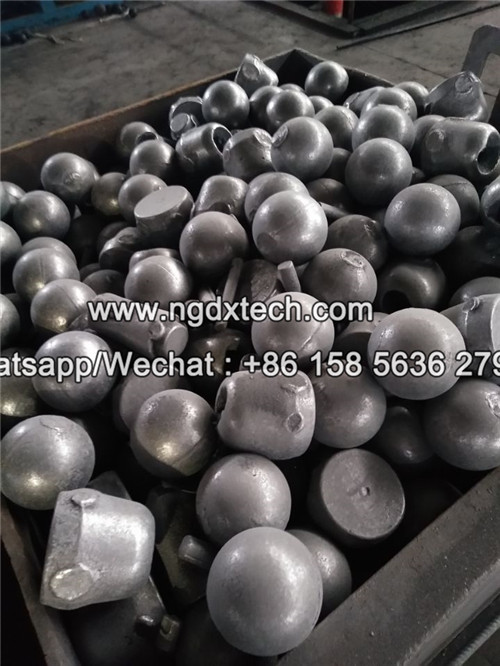Effect of quenching temperature on microstructure and hardness of high chromium steel balls
High chromium steel balls are widely used in mining and cement industries because of their excellent wear resistance and are considered to be the best grinding medium. With many years of experience in developing and producing high chromium steel balls, we found that heat treatment process is one of the most important key points to improve the performance of grinding balls. The effect of quenching temperature on the microstructure and hardness of the cast grinding ball during heat treatment will be discussed.
The difficulty of wear-resistant steel ball quenching operation is relatively large, mainly because quenching requires martensite, quenching cooling speed must be greater than the critical cooling speed, and fast cooling is always inevitable to cause great internal stress.
When the steel ball is quenching and cooling, how can we obtain martensite and reduce the effect of stress? This is the most important problem in quenching process. To solve this problem, we can start from two aspects, one is to find an ideal quenching medium, the other is to improve the cooling method of quenching.
According to the isothermal transformation curve of austenite, to obtain martensite by quenching, in fact, it is not necessary to carry out rapid cooling in the whole cooling process. The key is in the c curve near the tip, both at 650-550 degrees Celsius temperature range must be fast cooling, and from steel quenching temperature to 650 degrees and 400 degrees Celsius below, does not need rapid cooling, especially in the 300-200 degrees Celsius below the martensitic transformation occurs, especially should not be fast cooling, otherwise it will increase the internal stress.
In order to make clear the effect of quenching temperature, the quenching experiments of different temperatures were carried out, and it was found that the quenching temperature of steel ball had a great influence on hardness. Under the same cooling rate, the curve of hardness and quenching temperature appeared a peak, and the quenching temperature at the peak was the best quenching temperature.
If the optimal quenching temperature is understood as the quenching heat treatment at this temperature, the amount of secondary carbide precipited at room temperature is the most appropriate, which not only ensures the transformation of austenite into martensite, but also ensures the high carbon content of martensite. If the amount of secondary carbide precipitation exceeds the most appropriate amount, the carbon content of martensite will be reduced, thus reducing the hardness. If the amount of secondary carbide precipitation is less than the optimal amount, the residual austenite will also reduce the hardness.

Betty 86 158 5636 2791
Star 86 18756355533 starwang577322@foxmail.com
Address: Heli Industrial Zone, Ningguo City, Xuancheng, Anhui Province, China.
molding line
metal mold
heat treatment furnace
grinding media
Ball Production Ancillary Facility
Wrench
Induction Furnace
